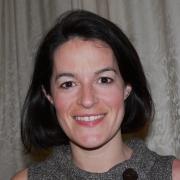
It’s hard to take the time to look back on the work you’ve completed, especially when you are focused on the here and now. If you don’t take stock however it becomes even more difficult to plan for your future.
As a research team within a large charity we produce evidence and insight which supports policy and practice change. This is an important but, at times, challenging role.
With limited resources, like other charities, we need to take decisions on what research we prioritise. We recognise however that a key opportunity to help us prioritise lies in understanding and acknowledging what we already have.
In trying to build the bridge between research evidence and strategy we’re clearly at an advantage in that both an evidence base and a strategy exist. What we have not yet achieved though is a link between the two.
We wanted to frame our research through the lens of our strategy in order to see where evidence and gaps exist. We commissioned the development of a framework to understand what the existing research base tells us at an aggregate level, and also inform us as to the quality of our research to date.
We took inspiration from an existing framework developed, and subsequent report published, by New Philanthropy Capital (NPC) for the Richmond group of charities and partners. What their report showed was how effective the findings from a framework analysis could be in both illustrating the strengths of an evidence base against some key priorities – and likewise where the gaps in evidence also exist. But what this framework did not realise was the potential value of the framework as a tool in itself.
A framework can map (cross tabulate) findings from research against strategic intentions which can be analysed, but the framework also provides an accessible list of key evidence which might be readily accessed by those who communicate such evidence.
We commissioned NPC to develop a framework based on our research reports to date alongside our strategic priority areas.
The framework has provided an accessible way of examining the evidence gathered against our strategic themes, and showed that the research activity is spread across strategic themes, but gaps do exist.
However there were some limitations. Transposed findings from our reports to the framework were not always accurate, limiting the ability to share readily the analysis of the framework outside of our team. This meant that extra resource was required to remedy the inaccuracies. The framework itself was also at an aggregate level therefore there is not an analysis of what we can collectively say about the evidence in summary.
Overall thought the framework has proved an important part of our journey in helping us to understand what we have and what we need. Our intention is to use the findings to generate our future agenda for research activity.



Add new comment